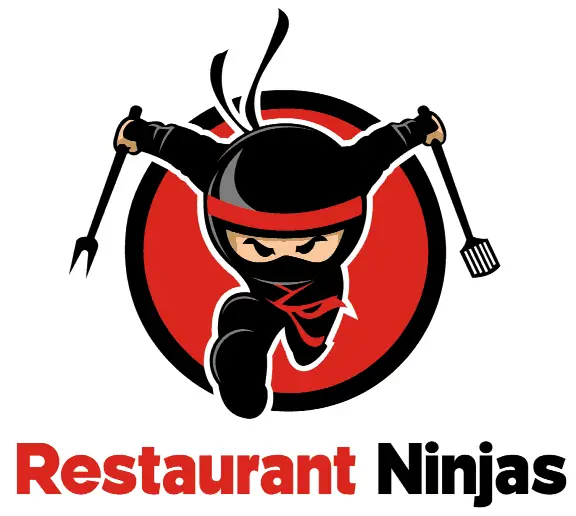Ordering food in a restaurant is an inexact science that requires equal parts common sense and ESP. Obviously, I am exaggerating with the ESP part, but there are going to be times where you feel like you need it! If you order too much, at best your profits are sitting on your shelves waiting for use and, at worse, food is wasted due to spoilage. If you order too little, you will find yourself wasting valuable resources (like your time) running to your supplier in between deliveries to pick items up that you ran out of. Even worse, you 86 the items and disappoint your customers (this is a NO-NO!). After two decades of managing restaurant inventory levels in varying concepts and volumes, I can confidently claim to be an “Ordering Jedi”. Prepare to be the Luke to my Yoda as I impart some wisdom on you.
Restaurants know how much food to order using a simple math formula. That formula is (Projected Usage * Buffer %) – Quantity on Hand. Before placing an order, a full inventory is completed to see how much of each item you have on hand.
While the above answer is all well and good, if you are a novice to this it probably leaves you with more questions than answers. How can I calculate my usage? What is a buffer? How can I do this quickly and efficiently? Continue on for a breakdown of how to apply the formula as well as different theories that go along with ordering!
Vocabulary to Know
I’m going to start off with some simple vocabulary. If you are like me, the word “vocabulary” alone conjures flashbacks to high school, including thoughts of “how do I use this in a sentence” and “the test is Friday!”. Don’t worry, I will keep it really simple. I will use mustard as an example to make it easier to visualize.
Ordering Unit: This is the unit that you order a product in. Let’s look at our example of mustard. It comes in a one-gallon bottle, but that is not an ordering unit. That gallon comes 4 to a case, so the ordering unit is a case.
On Hand: The term on hand is somewhat self-explanatory. You’re on hand is simply the amount of inventory you have of a particular product. On hand should always be calculated using your ordering unit for a particular item. For example, if you have 2 bottles of mustard, you’re on hand is .5 (since you have 2 bottles out of a case of 4).
Usage: The amount of product used in a given time period (usually a week). For example, if you start with week with 8 bottles of mustard (2 cases) and end with 6 bottles (1.5 cases), your usage is two bottles (.5 of a case).
Buffer: A buffer is built into your usage to come up with your par. Buffers are generally expressed in a percentage, ranging between 10% – 80%. For most products, a 50% buffer can be used successfully. Items with high variance would need a higher buffer to allow for fluctuating sales. Items that have a short shelf life would have a lower buffer.
Par: This is the number that is assigned to the amount of product you want to have on hand. Think of it as your “goal” quantity. This is often also called a “Build to”. Using our mustard example, we would take our usage of .5 (2 bottles) multiply it by the standard 50% buffer giving us a par .75 of a case. So if we are doing inventory and only have 2 bottles, we would order another case.
Reorder Quantity: Some items come in such high quantities versus their actual usage that they do not require a par. These items usually take years to expire and are used sparingly. For example, a cafe that carries honey (for tea) might only use 1 jug every 3 months. That jug comes in a case of 4. Luckily, unopened honey is good for years. Rather than going crazy trying to figure out a small fraction par, you would instead set a reorder quantity. Once you go below that quantity, you order another case (or whatever the smallest unit possible would be). So in this example, the reorder quantity would be .5 jug.
Putting the Vocabulary Together
Now that I made you feel like you were in freshmen English again with the vocabulary lesson, the rest is easy. When it comes to ordering, excel is your friend! Setup a basic spreadsheet that has a column for the on hand, par, and order amount for each week. If you’re good at excel, set up formulas to do the math for you and it will never take you long to do a perfect order inventory and place an order for exactly what you need.
Ordering Theories & Paradigms
Many restaurants keep their inventory levels alarmingly low. They do this with financial reasons in mind. If you reduce the amount of money spent on goods, you have more operating capital that can be used for other expenses. That makes sense in theory, but the moment you start running out of product any advantage you gained by having that working capital is lost. You lose it in the form of disappointed guests when you don’t have the ingredients for a dish they were craving. You lose it in opportunity cost (your time) when you have to run to your vendor and pick it up in between deliveries. If you send an employee, your wasting labor and probably running short in the restaurant, again impacting service.
One of the more controversial ideas surrounding keeping low inventory levels is the shampoo theory. The idea here is to keep your inventory levels at such a low level that your employees are extra careful with their portioning in order to prevent the headache of an 86. It is called the shampoo theory with the idea that people find ways to “stretch” shampoo when the amount left is limited. I personally do not believe in this idea whatsoever and think that if this is the way you have to manage your food cost, well, you have other issues in your restaurant.
On the other side of the coin, you don’t want to have TOO much product on hand. Heavy inventory levels lead to extra time in counting inventory, more items to move when cleaning, difficulty in rotating stock when receiving delivery, and operating capital sitting on the shelves. Just like cutting your inventory levels too close is not a smart business decision, carrying enough inventory to get you through a zombie apocalypse is just as unwise.
Just like Goldilocks trying to find a balance between too hot and too cold of porridge in the three bears, the perfect inventory level is somewhere in between heavy and light: it’s just right. Calculate new pars regularly and evaluate/change them as necessary. Figure out what buffer amounts you feel comfortable with and trust the system, which will be your system.

